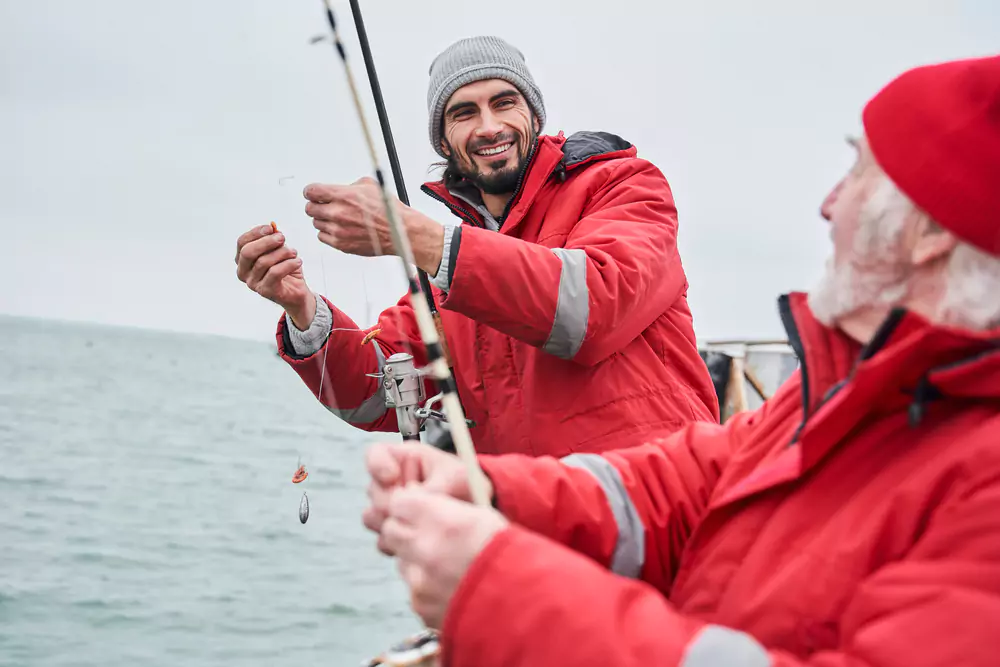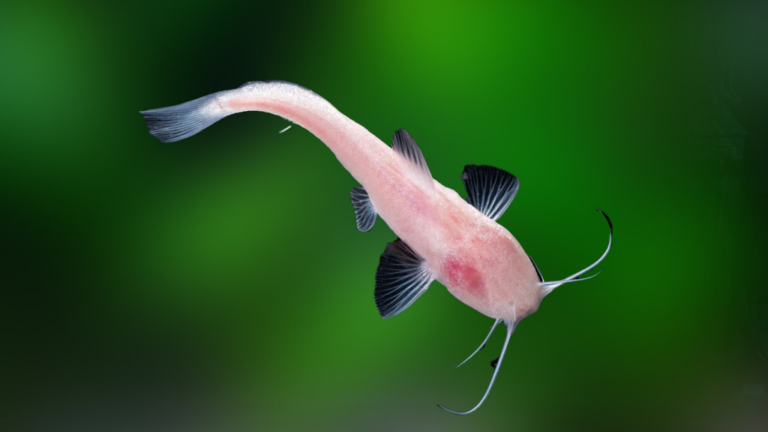How to Fish on a Moving Ship?
Fishing is an enjoyable activity allowing you to connect with nature. While many anglers prefer to fish from the calm shores, there is a unique joy to fishing on a moving ship. However, fishing on a moving ship is risky. You need to consider several factors, such as the speed and direction of the ship. So, how to fish on a moving ship?
The following blog post will teach the basics of fishing on a moving ship to make your fishing adventure enjoyable.
Where to Fish?
The first thing you need to do before fishing on a moving ship is find out where you can fish. Some ships may have designated fishing areas. Before fishing, you should always check with the ship’s crew and follow their rules. You should also respect other passengers and crew members and avoid fishing in restricted areas.
If you can fish on the ship, look for a spot that gives you enough space to cast your line without hitting anyone. It would help if you also avoided fishing near the ship’s propellers, which could damage your line. Ideally, it is best to fish from the back of the ship.
What Can You Catch?
The type of fish you can catch on a moving ship depends mainly on the water’s location, season and temperature. Some of the most common fish species that one can catch on a moving ship are:
- Mackerel: These are fast-swimming fish that get attracted to shiny objects. One can catch them trolling with lures.
- Bass: These predatory fish hunt for smaller fish near the surface. One can catch them trolling with lures.
- Tuna: These powerful and migratory fish can swim at high speeds and depths. One can catch them trolling with lures.
- Mahi-mahi: These colourful, acrobatic fish often jump out of the water when hooked. One can catch them trolling with lures.
- Sailfish: These are majestic billfish with a long dorsal fin resembling a sail. One can catch them trolling with lures.
How to Fish on a Moving Ship?
Fishing on a moving ship differs from fishing on a stationary boat. You need to understand the dynamics of a moving ship and how it affects your fishing equipment.
Understanding the Dynamics of a Moving Ship
When you fish on a moving ship, you need to consider the speed and direction of the ship and the wind. These factors will affect how your line behaves in the water and how far you can cast your line. The ship’s speed will determine how many lines you must let out and how fast you need to retrieve it.
Generally speaking, the faster the ship moves, the more line you must let out. If you let out too little line in too slowly, your line will drag behind the ship and create too much resistance in the water. It will make it harder for you to feel bites and hookfish and increase the risk of breaking your line.
The ship’s direction will determine where you should cast your line. Generally speaking, you should cast your line toward the ship’s movement, giving you more control over your line. You should also expect bites from fish following the ship’s wake, as this is where they will find food stirred up by the ship’s propellers.
The wind and current conditions will affect how your line drifts in the water and how much drag it creates. Generally speaking, you should cast your line downstream of the ship, reducing the drag on your line and making it easier for you to feel bites and hookfish.
Selecting the Right Fishing Equipment

When fishing on a moving ship, you must select equipment suitable for trolling adaptable to a moving ship. Here are some of the leading fishing equipment you need to consider when fishing on a moving ship:
Rod and Reel Selection
Choose a rod and reel to handle the high loads of fishing on a moving ship. It would help if you looked for a rod designed for trolling. It will have a strong backbone and a flexible tip that can absorb the shocks of the moving ship and the fighting fish. You should also make sure that your rod and reel are compatible with each other and balanced in terms of weight.
Choosing the Right Line
You must choose a solid line to withstand the tension of fishing on a moving ship. Look for a line with high breaking strength, giving you more control over your line. Choose a line with a low diameter and visibility. It will reduce your line’s drag in the water.
Some of the most common types of line used for fishing on a moving ship are:
- Monofilament: This single strand of nylon is easy to use and inexpensive. It has good knot potency and abrasion resistance.
- Braided: This consists of multiple strands of synthetic fibres woven together. It has very high strength and shallow stretch, which makes it very durable.
- Fluorocarbon: This consists of multiple strands of fluoropolymer extruded together. It has high strength and low stretch, which makes it reliable.
Terminal Tackle and Hooks
You must choose terminal tackle (the items attached to the end of your line) and hooks suitable for the type of fish you want to catch. It is best to look for terminal tackle and strong hooks to hold the fish without breaking.
Some of the most common types of terminal tackle and hooks used for fishing on a moving ship are:
- Lures: Lures are artificial baits that mimic the appearance of natural prey. They consist of metal and plastic and have various shapes and colours. Lures are usually attached to your line with a split ring, which allows them to rotate freely in the water without twisting your line.
- Bait: These are natural baits that are either alive/dead. They can be whole fish, fish parts and other animals (such as crabs and worms). Bait is usually attached to your line with a hook, allowing you to present the bait in different ways in the water.
- Hooks are metal devices one can use to catch fish by piercing their mouths. They can have various shapes (such as J-shaped and treble-shaped), sizes (from 1/0 to 10/0), and gauges (from thin to thick). Hooks are usually attached to your line with knots.
Mastering the Art of Casting
When fishing on a moving ship, you need to master the art of casting your line without hitting anything. It would help if you considered several factors when casting your line on a moving ship:
Aim for the Direction of the Ship’s Movement
Always cast your line toward the ship’s movement. It gives you more control over your line. You should avoid casting your line sideways, making it harder to control and increasing the risk of tangling your line.
Use the Wind and Ship’s Movement to Your Advantage
It would help if you always used the wind and ship’s movement to your advantage when casting your line on a moving ship. You should cast your line downwind of the ship, reducing your line’s drag in the water and making it easier for you to hookfish.
Cast your line slightly ahead of the ship. It allows the wind and ship’s movement to carry your line and lure you further away from the ship and closer to the fish.
Adapting Fishing Techniques to a Moving Ship
When fishing on a moving ship, you must adapt your fishing techniques to suit the fishing conditions. It would help if you considered several factors when applying your fishing techniques on a moving ship:
Trolling
Trolling is one of a moving ship’s most common fishing techniques. It involves dragging a lure behind a moving boat at a constant speed and depth. Trolling is ideal for catching fast-swimming pelagic fish, such as mackerel and sailfish.
- When trolling on a moving ship, you must adjust your speed, depth, and distance according to the type of fish you want to catch.
- Troll at a depth that matches the depth of your target fish (usually between 10 to 100 feet).
- Troll at a distance that keeps your lure or baits away from the ship’s propellers (usually between 50 and 200 feet).
Vertical Jigging
Vertical jigging is another fishing technique that can be used on a moving ship. Vertical jigging involves dropping a weighted lure vertically into the water and then jerking it up and down with short movements. It is ideal for catching deep-water and bottom-dwelling fish.
- When vertical jigging on a moving ship, you must adjust your speed and depth according to the type of fish you want to catch.
- Jig at a depth that matches the depth of your target fish (usually between 50 to 300 feet).
- Use an action that matches the natural movement of your target fish’s prey (usually rhythmic).
Bottom Fishing
Bottom fishing is another fishing technique that can be used on a moving ship. It involves vertically dropping a baited hook into the water and letting it sink to the bottom. Bottom fishing is ideal for catching slow-moving and bottom-feeding fish.
- When bottom fishing on a moving ship, you must adjust your fishing depth and weight according to the type of fish you want to catch.
- Fish with a weight that keeps your rig on or near the bottom (usually between 1 to 10 ounces).
- Use a bait that matches the natural food of your target fish.
Staying Safe and Comfortable
When fishing on a moving ship, you must always stay safe. It would help if you considered several factors when fishing on a moving ship:
Wear a Personal Floatation Device (PFD)
You should always use a personal floatation device (PFD) when fishing on a moving ship, as this will keep you visible in case you fall overboard. It would help if you looked for a PFD designed for fishing, as it will have features such as pockets and clips. You should also ensure that your PFD fits you properly and does not restrict movement.
Secure Your Equipment
It would always help to secure your equipment when fishing on a moving ship; this will prevent your equipment from getting damaged by the ship’s movement. Attach your rod and reel to the ship’s railings. It will help to store your line and boxes. You should also avoid leaving your equipment unattended on the deck.
Dress Appropriately
You should always dress well when fishing on a moving ship, as this will protect you from the sun and other elements. Try wearing comfortable clothing. You should wear clothing that is UV-protective and water-repellent. Wear accessories such as hats and shoes that shield you from the sun’s rays.
Frequently Asked Questions (FAQs)
What is the difference between trolling and trawling?
Trolling and trawling are fishing techniques that involve pulling a trap or bait behind a moving boat. However, trolling is usually done at faster speeds and shallower depths. Trawling is usually done at slower speeds and deeper depths.
Trolling is also more selective and targeted for specific fish species (such as mackerel and sailfish). Meanwhile, trawling is more general for various fish species (such as cod and shrimp).
What are the different types of trolling fishing?
Some of the most common types of trolling fishing are:
- Flat-line trolling is when you troll your lure or bait directly behind the boat without using any weights to adjust the depth. It is suitable for catching fish that swim near the surface.
- Downrigger trolling: When you troll your lure or bait using a downrigger consisting of a spool of wire attached to a weight. The downrigger allows you to control the depth of your lure or bait by adjusting the amount of wire you let out.
- Planer board trolling: When you troll your lure or bait using a planer board, consisting of a flat board attached to a line. The planer board lets you spread your lure from the boat by pushing the water pressure and wind sideways.
What is the best depth to fish?
The best depth to fish depends on several factors, such as the type of fish you are targeting and the cover of the lake. Different fish species have different behaviours that affect their depth distribution. Therefore, there is no answer to the best depth to fish, but rather a range of depths that can vary depending on the situation.
What are two different fishing methods?
Some of the most common fishing methods are:
- Casting: This is when you throw your line and lure or bait into the water using a rod, and a reel is suitable for catching fish near the surface or in shallow water.
- Fly fishing: This is when you use a particular type of rod and reel (called a fly rod and fly reel) and a particular type of lure (called a fly) to imitate the movement of insects or other small animals on or near the water surface.
What is the best method of fishing?
There is no definitive answer to the best fishing method, as different methods have different advantages and disadvantages depending on the type of fish you want to catch, the type of equipment you use, and the wind and current conditions.
However, some general factors that can help you choose the best method of fishing are:
- The location and depth of the fish
- The behaviour and activity level of the fish
- The size and shape of the fish’s mouth
Conclusion
Fishing on a moving ship is an exciting way to enjoy fishing in different locations. However, fishing on a moving ship also requires special skills to overcome the challenges of fishing on a moving ship. Following the tips and tricks we have shared in this blog post on how to fish on a moving ship can improve your chances of catching more fish.
Happy fishing!






